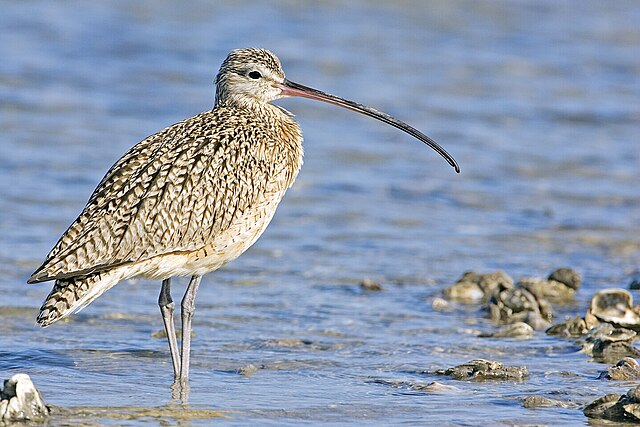
Curlews are Europe’s largest wading bird, with an elegant and modest feather coat comprised of cream, brown, grey, and white. Their long down-curved bill is a real showstopper, complemented by their tall legs and high-pitched, enigmatic call. During the UK winter, they can often be found feeding in groups on tidal mudflats, salt marshes, and farmland. Although many spend their winters in Ireland and France, the UK’s relatively mild climate attracts a large influx of them each year. In the spring and summer, they migrate to their breeding grounds in upland areas of rough pasture, wetland, and heather moorland.
The UK plays an important role in supporting this species, providing around 30% of Western European curlew breeding grounds. However, their population has declined by roughly 65% since 1970. The conversion of moorlands into forest has made suitable breeding habitats increasingly difficult to find. Additionally, ground-nesting makes curlews particularly vulnerable to predators such as foxes, which prey on their eggs, chicks, and adult birds. Intensive farming practices such as drainage and reseeding also contribute to their decline. Due to these factors, curlews have been on the Red List since 2015 – the highest level of conservation concern.
The UK plays an important role in supporting this species, providing around 30% of Western European breeding grounds.
Fortunately, there are conservation efforts aimed at protecting these remarkable birds. The Curlew Recovery Project, for example, uses conservation tools such as “head-starting”, which involves collecting eggs, rearing them safely, and releasing them back into the wild. Members of the public can also support by reporting sightings, providing valuable data to help track movements and habitat use. So far, the Curlew Recovery Project has collected 312 eggs and released 208 curlews back into their natural environment.
If you find yourself in a boggy moorland area this Winter, be sure to keep an eye out for this beautiful bird.

